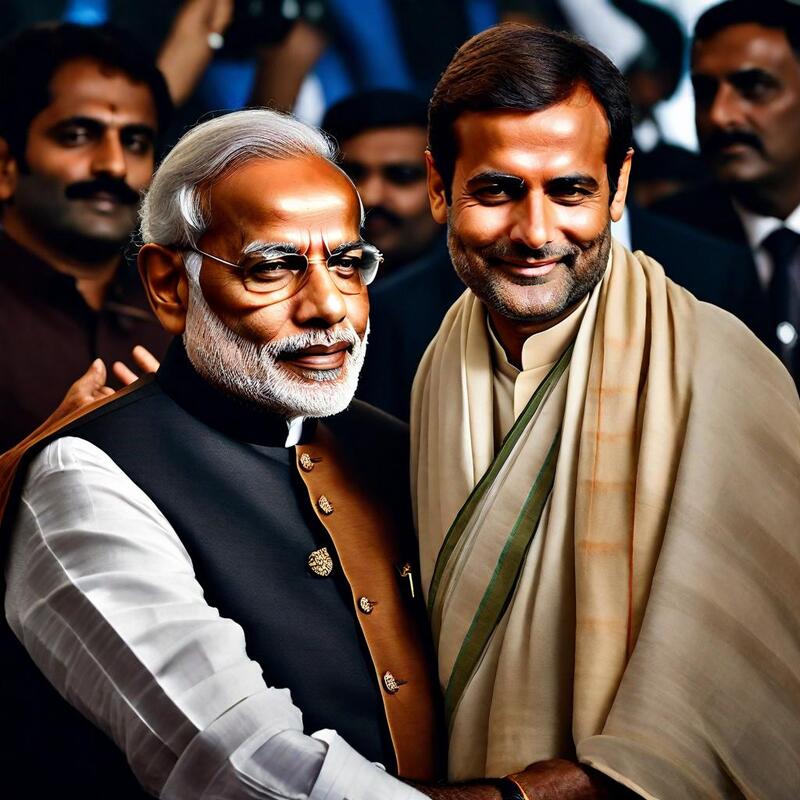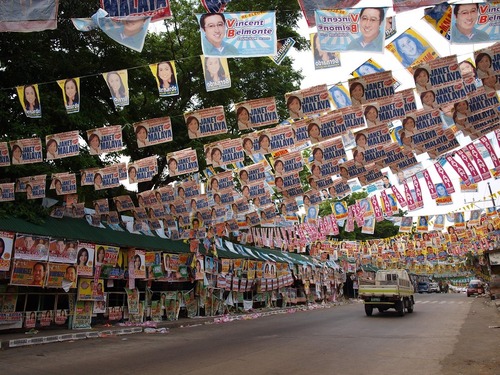
Introduction of Electoral Reforms in India
In the arena of Indian democracy, electoral reforms in India have long been a top priority. While much emphasis has been focused on external variables such as campaign finance, candidate selection, and voting procedures, the internal dynamics of political parties and the regulation of intra-party democracy are sometimes overlooked. This editorial aims to delve into the evolving complexities and hurdles surrounding the management of intra-party democracy concerning electoral reforms in India, shedding light on the paradoxical nature of this democratic conundrum.
Political parties are the foundation of government and representation in India, a country known for its vibrant democracy. These political entities are anticipated to take the lead in advancing democratic principles by fostering an environment that is inclusive, transparent, and responsible. However, many Indian political parties’ internal reality contrasts sharply with these democratic ideals.
Intra-party democracy, the internal democratic functioning of political parties, stands as the bedrock of a strong and dynamic democratic framework. It encompasses pivotal elements like candidate selection, policy formulation, and leadership contests, all of which shape the party’s direction and influence its engagement with the electorate. However, the existing intra-party democracy in India raises concerns and provides significant barriers to the progress of democratic improvements.
The lack of stringent regulations for intra-party democracy raises concerns about transparency and fairness in candidate selection and policy formulation within political parties. Internal activities of political parties typically lack defined rules and oversight, although legislation overseers external problems such as campaign funding. The existing divide within political parties often fosters an environment conducive to nepotism and favouritism, sidelining deserving candidates and leaders. Strengthening legislative frameworks for intra-party democracy is imperative to promote transparency, fairness, and equal opportunity within political organizations.

Emerging Issues and Challenges
- Dynastic Politics: Dynastic politics involves passing down positions of leadership and political influence within families. It is a system in which members of political dynasties, often linked by familial links, hold crucial posts within political parties and advance up the political ranks, perpetuating a cycle of family domination in politics.
One of the most serious challenges linked with dynasty politics is the degradation of fair playing grounds and chances for aspiring leaders. In such a system, family connections and name recognition frequently trump merit and experience, impeding the advancement and development of new political leaders. This not only stifles competition but also reduces the range of opinions and ideas in the political environment. To overcome the issues raised by dynastic politics, it is critical to foster internal party democracy, and merit-based selection methods, and provide a fair playing field for all potential leaders. It entails cultivating a political culture that emphasizes competency, inclusion, and equitable chances for people from all backgrounds. - Concentration of Power: The term “concentration of power” refers to a situation where a few individuals or organizations hold excessive decision-making authority and influence within a system, often at the expense of wider participation and democratic principles. It is a phenomenon that appears in several settings, including politics, business, and government.
The threat of authoritarianism, as well as the degradation of democratic ideals, are two of the most pressing concerns highlighted by power concentration. A successful democratic system needs checks and balances, which are restricted when power is concentrated in the hands of a small group of individuals. It may result in a lack of transparency, accountability, and responsiveness to the needs and aspirations of the general public.
Promoting decentralization, transparency, and accountability mechanisms is critical for dealing with the problems caused by power concentration. It is critical to build democratic institutions, ensure checks and balances, and cultivate an inclusive and participatory culture. Promoting an independent judiciary, free media, and robust civil society groups that may act as watchdogs and give oversight are some ways to do this. - Lack of Intra-Party Democracy Regulations: This refers to the absence of clear regulations and oversight to ensure fair and democratic practices within political parties. The internal operations of political parties are usually left unchecked, which may result in an imbalance in how democratically these organizations operate. While external elements such as campaign funding and electoral legislation are usually within control.
Furthermore, a lack of constraints may make political parties’ decision-making procedures less transparent. As a result of the milieu it creates, in which critical decisions are made behind closed doors without sufficient justifications or explanations, this lack of transparency has the potential to undermine trust among party members and the public. To maintain political parties’ integrity and legitimacy, decision-making must be transparent and accountable.
To address these concerns, comprehensive intra-party democratic mechanisms must be developed. These regulations might include processes for selecting candidates, rules for party elections, and techniques for resolving internal disputes. Political parties may foster a culture of democratic principles and strengthen the nation’s overall democratic fabric by enforcing specific rules that ensure transparency, justice, and equitable participation. - Limited Membership Participation: Limited membership involvement refers to a situation in which party members engage and actively participate in political party decision-making procedures to a limited extent. In an ideal democratic society, political parties should provide platforms for their members to actively engage in policy development and party direction. However, the predominance of low membership participation poses a severe challenge to the concept of internal party democracy. Several factors contribute to low membership engagement. One of the most significant factors is the lack of inclusive and participatory party structures. Many Indian political parties have centralized decision-making authority and a hierarchical structure. This hierarchical structure frequently mutes grassroots party members’ thoughts and contributions, making bottom-up involvement difficult. Party members so feel detached, disengaged, and marginalized inside the party system.
Political parties must adopt a more inclusive and participatory strategy to address the issue of low membership involvement. This includes creating instruments for active member engagement, such as regular town hall meetings, policy debates, and feedback sessions. Parties should aim to establish open and accessible channels of communication so that information may be easily transmitted between party officials and members. By creating an atmosphere that promotes active participation and diversity, political parties may strengthen their internal democracy and better serve the needs of the greater society. - Lack of Transparency in Candidate Selection: A basic issue inside political parties is a lack of candor in the selection of candidates, particularly for election campaigns. Choosing a candidate is a critical step in the democratic process since it determines who will represent the party and seek public office. However, when there is a lack of transparency in this process, concerns about fairness, meritocracy, and political party accountability arise. Nepotism, favoritism, and the influence of entrenched interests are three key consequences of a lack of transparency in candidate selection. Without fair and open selection procedures, party leaders risk selecting candidates based on their financial condition, loyalty, or personal connections rather than their skills, experience, or commitment to public service. As a result, the ideals of justice and equal opportunity may be compromised, and candidates who are not best suited to represent the people’s interests may be chosen. Political parties should establish clear and transparent guidelines for the selection process to address the issue of candidate transparency. These rules should outline candidate eligibility standards, application and assessment processes, and controls to ensure fairness and accountability. Parties can also consider forming unbiased selection committees that may evaluate applications and make recommendations based on credentials and merit.
Conclusion:
Finally, a study into new issues and obstacles in managing intra-party democracy for electoral reforms in India reveals an oxymoron democracy. Even though India prides itself on being the world’s largest democracy, current intra-party democracy issues pose a severe danger to the democratic values of inclusiveness, transparency, and accountability.
Moreover, electoral reforms in India have targeted improvements in political finance regulations, including the implementation of electoral bonds and the reduction of the anonymous cash donation threshold. These measures are designed to mitigate the impact of financial influence on politics and foster fairer competition among candidates and political entities.
Electoral reforms have remained a persistent subject of discussion along India’s democratic journey, reflecting ongoing efforts to enhance the electoral system’s fairness and credibility. Various initiatives have been undertaken to address challenges, streamline processes, and uphold the principles of democracy, ensuring that elections truly represent the will of the people. Over time, many reforms have been made to address concerns like transparency, accountability, and representation. Despite these efforts, issues remain, and more reforms are required to enhance the voting system.
The history of electoral reforms in India reflects a commitment to improving the democratic process and addressing the evolving needs of a diverse and complex society. Technological advancements have played a crucial role in enhancing the credibility and transparency of elections, from the introduction of Electronic Voting Machines (EVMs) to the implementation of Voter Verified Paper Audit Trails (VVPATs).
Electoral reforms in India represent an ongoing journey towards fortifying the nation’s democratic structure. Despite notable advancements in fostering transparency, accountability, and inclusivity, the quest for refinement persists. It’s imperative for all stakeholders to maintain vigilance and proactivity in pinpointing and rectifying gaps within the electoral framework. This continuous effort is crucial to uphold the integrity of elections, ensuring they remain free, fair, and authentic expressions of the populace’s voice.




2 thoughts on “Electoral Reforms in India”